The history of analog magnetic recording can be broadly divided into two categories: wire recorders up until World War II, and the tape recorders that followed. As the name suggests, a wire recorder is a device that records on a thin metal wire with a diameter of about 0.1mm. Before the dramatic advancement of tape recorders, wire recorders were primarily used in the United States for communication recordings.
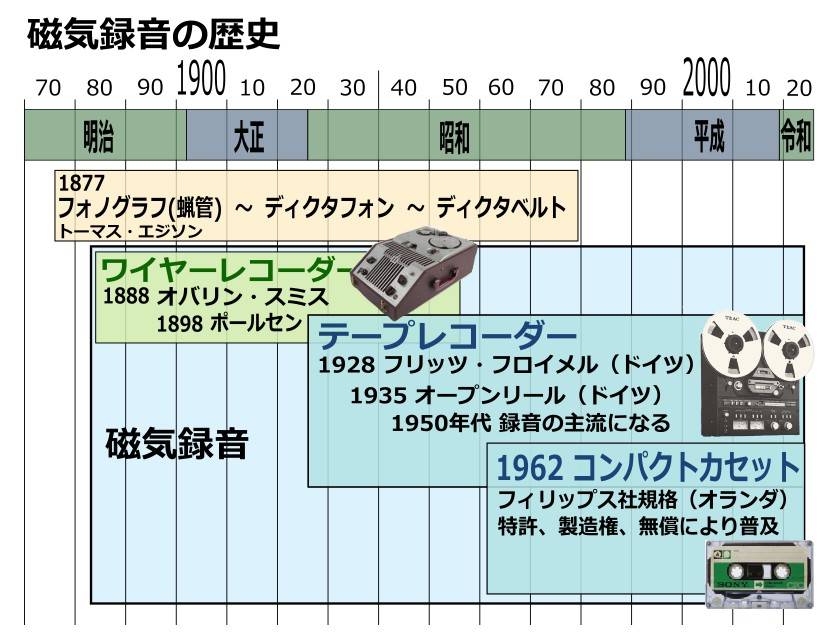
■ 1888 - Magnetic Recording Concept Announced by Oberlin Smith (USA)
The history of magnetic recording dates back to when Oberlin Smith first published the principles of magnetic recording in a magazine without securing a patent. His concept included diagrams like the one below. The diagram shows a coil wrapped around a steel wire, which acts as the magnetic head that’s connected to a carbon microphone and a battery. The battery is essential for powering the carbon microphone and supplying the current needed to magnetize the wire. The design of the reel system is also well thought out, where the take-up reel is manually operated, and a light brake is applied to the feed reel, ensuring the steel wire is kept taut. This concept already covered the fundamental aspects required for magnetic recording.
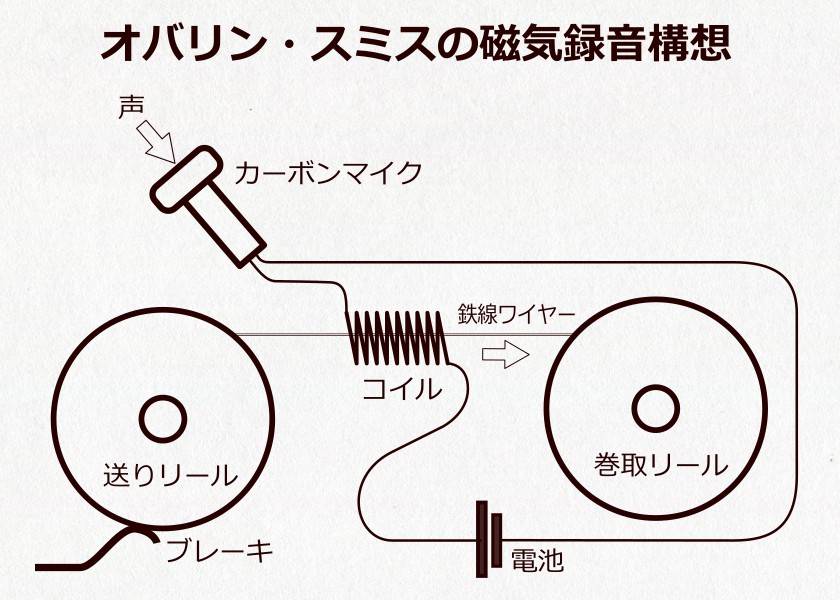
■ 1898 - The Birth of Magnetic Recording: Telegraphophone by Paulsen (Denmark)
Ten years after Oberlin Smith’s publication, a functional wire recorder was invented by Valdemar Paulsen. Below is a diagram of an early prototype. The structure features a steel wire wrapped around a drum and a movable head, showing influences from Edison’s wax cylinder. However, just a few years later, the design evolved to utilize the advantages of wire with a rewinding structure and a fixed head.
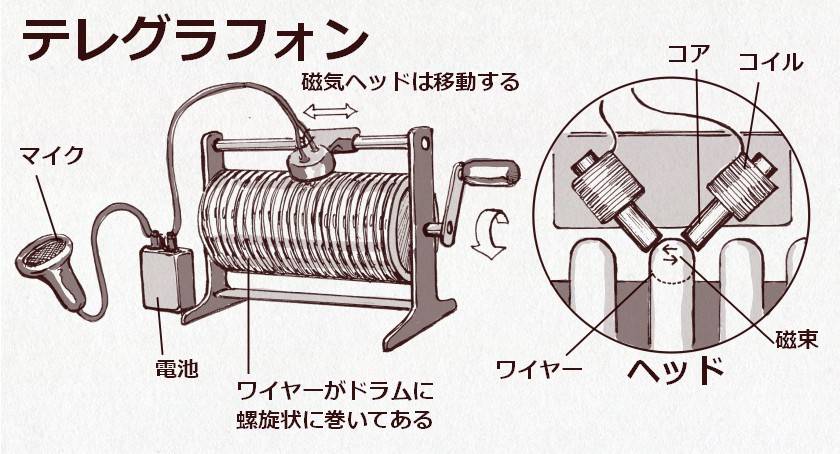
The basic principle is the same as that of Oberlin Smith: sound is converted into an electrical signal, and this signal is used by a coil-shaped magnetic head to alter the magnetization pattern of the wire that recorded the sound. Playback follows the reverse process. Since vacuum tubes were not yet practical at this time, amplification wasn't possible, and so playback could only be heard through devices like a telephone receiver. The name "Telegraphohone" suggests that it was originally intended for telephone use.
In developing the prototype, the head design was likely the most challenging aspect. The prototype developed here formed the basis for the heads used in later tape recorders.
In 1907, improvements were made to the sound quality, including reducing distortion and increasing sensitivity through the use of DC bias. Magnetic recording works by converting sound into electrical signals, and using the electrical power and electromagnets, it magnetizes the wire, which serves as the medium. However, the relationship between electrical power and magnetization is not linear. Therefore, by applying a DC current in addition to the audio signal, distortion can be minimized.
After this, Paulsen began focusing on radio technology and distanced himself from magnetic recording. As a result, only a small number of wire recorders were produced during this period. The invention of magnetic recording may have been ahead of its time, as vacuum tubes were not yet practical.
By the 1920s, when vacuum tubes were finally commercialized and wire recorders became functional products. However, their use was limited to situations requiring long-duration recording, which was a major advantage of wire recording.
■ Pre-War Dominance of the Dictaphone as a Recording Device
Until the 1940s when wire and tape recorders began to emerge, the dominant recording device was the Dictaphone, which was an extension of Thomas Edison’s wax cylinder phonograph. It was mainly used for recording human voices. The problem with the Dictaphone was that recording involved physically engraving sound vibrations into a wax cylinder, which made cylinders inconvenient since they couldn’t be reused. Furthermore, the recording time was very limited, typically only up to a few minutes, and at most, about 10 minutes. It was also unsuitable for harsh conditions, such as vibrations in moving vehicles.
In the early stages, sound was recorded by physically engraving vibrations into the wax, but in the later stages, the system was improved to electrically engrave the sound by feeding it through a microphone. Despite these improvements, it could not compete with the convenience of magnetic recording. Nevertheless, successors like the Dictabelt continued to be used well into the 1970s.
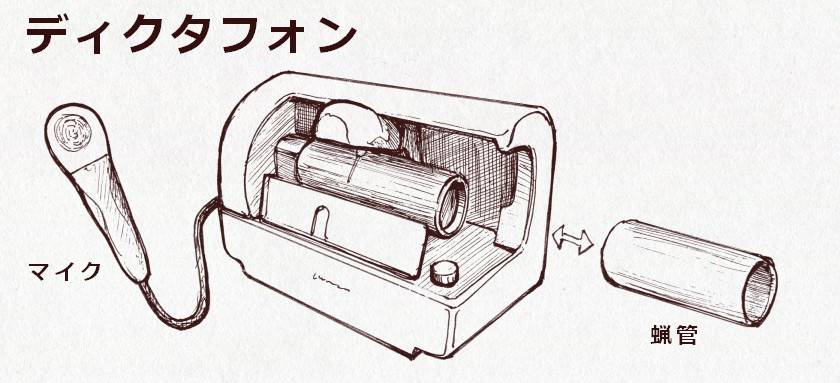
■ The Golden Age of the Wire Recorder
The period during which wire recorders were the most widely used was from around 1940 to 1950, which wasn’t a very long period of time. Their compact size and resistance to environmental vibrations made them highly valuable for military radio recording and aviation applications. Additionally, their durability and ability to be used for long durations made them useful as music players on trains. While the sound quality was not exceptional, it was sufficient for recording human voices.
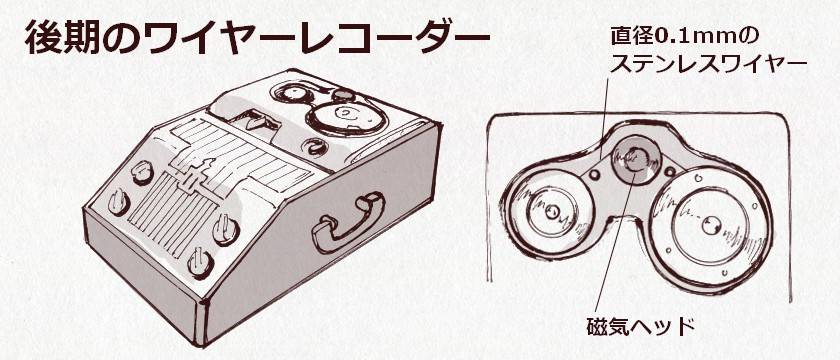
When compared to the Dictaphone, the wire recorder had the advantage of being able to reuse the wire and it offered flexibility in wire length, making it possible to record for extended periods of up to an hour–this was a huge advantage at the time.
By the 1940s, alternating current (AC) bias was introduced to improve sound quality. AC bias is an essential technology for magnetic recording, and I will explain it in more detail next time.
The wire used in wire recorders of this era was made of 18-8 stainless steel. Stainless steel is typically seen as having weak magnetic properties, but it was actually ideal for use in recorders because it prevented the wire from becoming overly magnetized, which would have made both recording and demagnetizing difficult.
The wire thickness was approximately 0.1mm, which made the wire recorders much more compact compared to tape recorders of the time. This was another significant advantage. The wire’s feed speed was 24 inches per second, which is much faster compared to the tape recorders: compact cassettes run at 1.875 inches per second, while open reel tapes run at either 15 or 7.5 inches per second. This makes the wire recorder considerably faster. (Note that 1 inch equals to 25.4mm)
■ The Rise of the Tape Recorder
However, during World War II, the tape recorder made significant advances in Germany. After the war, this technology spread worldwide, which led to further improvements in sound quality. By the 1950s, Japan's Tokyo Telecommunications Engineering (Sony) also entered the tape recorder market and advanced the technology into a more user-friendly and higher-quality product. As the sound quality of tape recorders improved, wire recorders gradually fell out of use.
Next time, I will explore the history of the tape recorder.
The “sound & person” column is made up of contributions from you.
For details about contributing, click here.











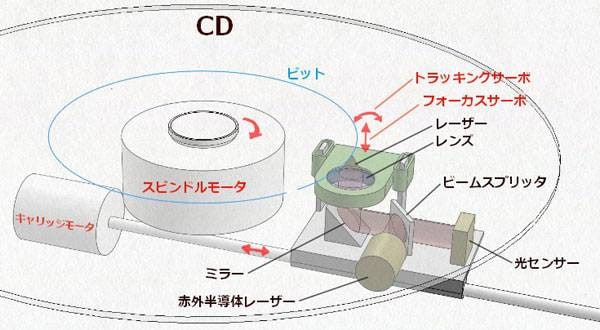
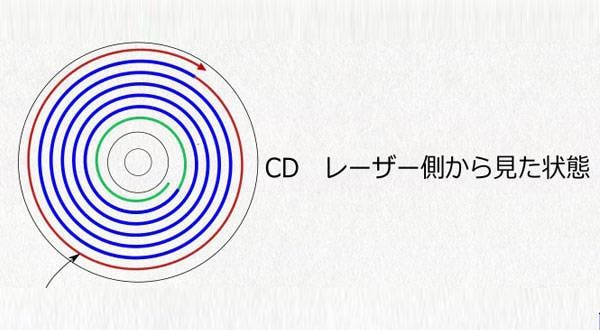
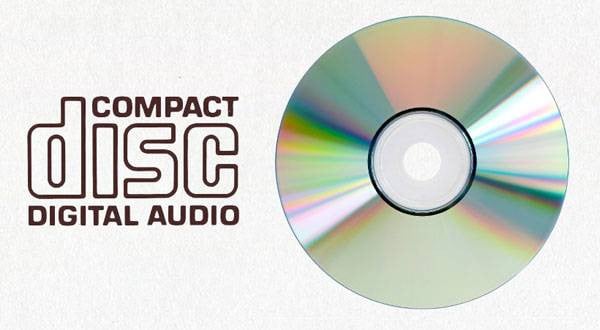
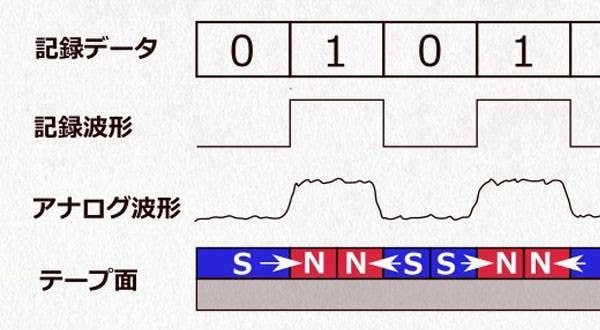
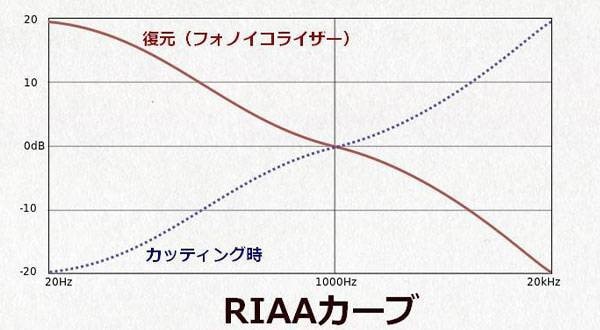
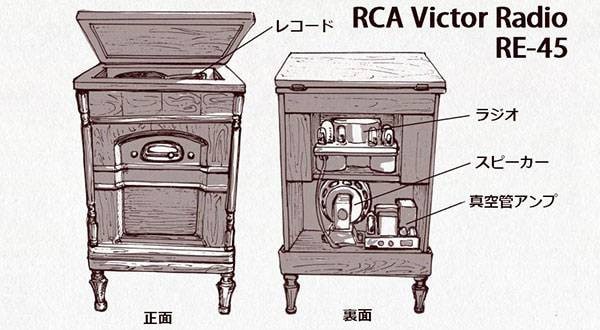
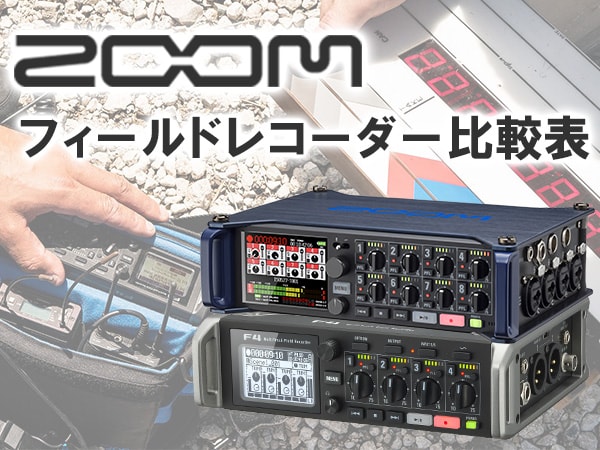 ZOOM フィールドレコーダー比較表
ZOOM フィールドレコーダー比較表
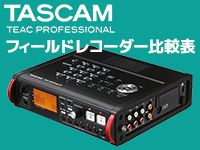 TASCAMフィールドレコーダー 比較表
TASCAMフィールドレコーダー 比較表
 ZOOMレコーダー 比較表
ZOOMレコーダー 比較表
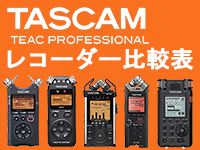 TASCAMレコーダー 比較表
TASCAMレコーダー 比較表
 サウンドハウス社員が選ぶ 『おもしろ商品』はコレだ!
サウンドハウス社員が選ぶ 『おもしろ商品』はコレだ!
 ミュージックビデオ撮影テクニック!
ミュージックビデオ撮影テクニック!















